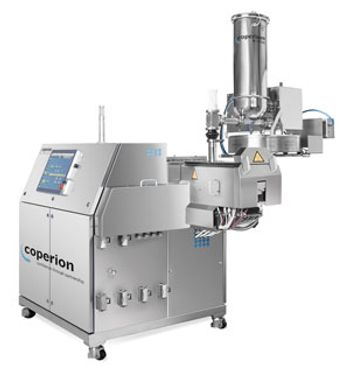
Specialist biopharmaceutical company, Alvotech, has announced receipt of a manufacturing license from the Icelandic Medicines Agency, applying to its biopharmaceutical facility based in Reykjavik, Iceland.

Specialist biopharmaceutical company, Alvotech, has announced receipt of a manufacturing license from the Icelandic Medicines Agency, applying to its biopharmaceutical facility based in Reykjavik, Iceland.

CPhI releases the bio trends portion of its annual report, which predicts an increase in bioconjucation expertise and biopharma productivity over the next five years.

While food, shelter, and clothing are the primal essentials for life, hope-as embodied by modern medicine-has now become part of that human expectation.

The company’s biosimiliar to Amgen’s Neulasta (pegfilgrastim) received a positive opinion for marketing authorization from the European Medicines Agency’s Committee for Medicinal Products for Human Use (CHMP).

Cell-line quality has a significant impact on biologic drug quality; learn more about this and other upstream challenges at the new bioLIVE launching this year adjacent to CPhI Worldwide 2018.

Experts suggest health care providers and policymakers proceed with caution when exposing patients to the digital pill.

Research by Thermo Fisher Scientific and LumaCyte suggests that LumaCyte's Radiance instrument offers the ability to rapidly analyze viral vaccines to speed development and production and ensure their effectiveness.

The European Medicines Agency has recommended Luxturna (voretigene neparvovec) as the first treatment option for hereditary retinal dystrophy with mutations of the RPE65 gene.

The CHF 400-million (US$416-million) investment in Lonza's biopark in Visp, Switzerland, will expand Ibex Solutions with two new offerings, drug substance development and drug substance and drug product manufacturing.

The company will showcase its line of connected devices at and its new PureHale portable drug delivery device designed for upper respiratory care.

Omya will showcase Omyapharm 500-OG (calcium carbonate and tribasic calcium phosphate) at CPhI Worldwide in Madrid, Spain, on Oct. 9–11, 2018.

The company will showcase its gelatins for advanced pharmaceutical and biomedical applications at CPhI Worldwide on Oct. 9–11, 2018 in Madrid, Spain.

3D printing is being explored as a manufacturing method for on-demand, personalized medicine.

The drug particle engineering and nanotechnology company offers a nanotechnology platform that can revive failed drugs in the pharma pipeline.

Guenter Nadler, director of Business Development at Aptar Pharma, will present an insight briefing on new drug-delivery trends in treating upper and lower respiratory tract issues on Wednesday, Oct. 9, 2018 at CPhI Worldwide.

Coperion’s ZSK 18 MEGAlab extruder fulfills requirements for both wet extrusion and hot-melt extrusion pharmaceutical processes.

Advances in medicine and consumer electronics can enhance drug delivery and patient care.

The collaboration will focus on developing manufacturing solutions for biosimilars.

FDA, innovator companies, and biosimilar developers maneuver over exclusivity, naming, interchangeability, and more.

The collaboration will explore the potential of Dyadic’s gene-expression platform to produce multiple biologic vaccines and drugs.

New products were developed as next-generation process intensification technologies, MilliporeSigma reports.

Becton Dickinson’s (BD) Advanced Bioprocessing business will be integrated into Thermo Fisher's Life Sciences Solutions segment.

More than 120 healthcare organizations plan to bring competition to generic drug market.

Research from the Perelman School of Medicine at the University of Pennsylvania suggests that a universal flu vaccine that protects people against most influenza strains is one step closer to reality.

Novartis will sell selected portions of its Sandoz United States portfolio to Aurobindo Pharma USA for $900 million in cash, plus $100 million in potential earn-outs.